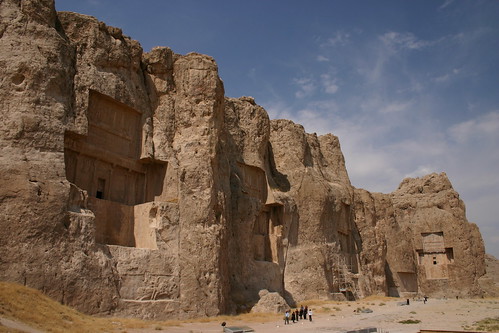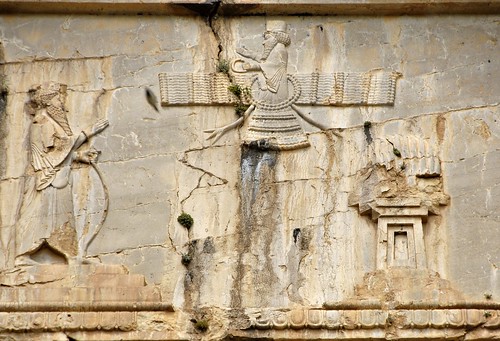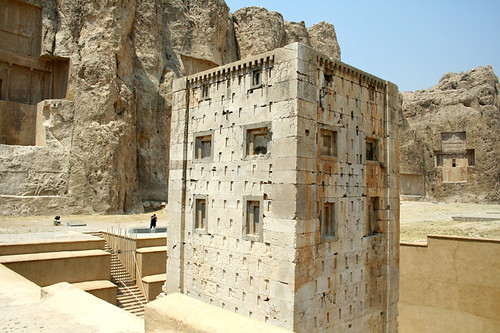Do you remember I told you about Naghshe Rostam? There, I mentioned about Kaba of Zoroaster and promised to talk about it later. Below is a picture of Naghshe Rostam located close to the city of Shiraz, Iran.
First who is Zoroaster?
Zoroaster (or Zarathushtra) was an ancient Iranian prophet and religious poet back to roughly early first millennium BCE. In his revelation, the prophet sees the universe as the cosmic struggle between “truth” and “lie.”
What is Zoroastrianism?
Zoroastrianism is the religion and philosophy based on the teachings ascribed to the prophet Zoroaster, after whom the religion is named. The term Zoroastrianism is, in general usage, essentially synonymous with Mazdaism, i.e. the worship of "Ahura Mazda", exalted by Zoroaster as the supreme divine authority. While Zoroastrianism was once the dominant religion of much of Greater Iran, the number of adherents has dwindled to not more than 200,000 Zoroastrians worldwide, with concentrations in India and Iran.
Who is Ahura Mazda?
Ahura Mazda is the name for a divinity exalted by Zoroaster as the one uncreated Creator (or basically God.)
What is a Fire Temple?
A Zoroastrian Fire Temple is a place of worship for Zoroastrians. Although Zoroastrians revere fire in any form, the temple fire is not literally for the reverence of fire: In the Zoroastrian religion, fire, together with clean water, is an agent of ritual purity.
What is Faravahr?
Faravahar is one of the best-known symbols of Zoroastrianism, the state religion of the ancient Persian Empires. In Iran, the present-day successor state of the ancient Persian Dynasties, Zoroastrianism is no longer the official state religion, however the Faravahar has now come to represent a national Persian symbol that reflects both ancient and modern Persia, which is now known as Iran. Below is a picture of Faravahar, the one with long wings.
The "Cube of Zoroaster", is a 5th century BCE Achaemenid-era tower-like construction at Naghsh-e Rostam, an archaeological site just northwest of Persepolis, Iran. The name Kaba of Zartosht probably dates to the 14th century, when many pre-Islamic sites were identified with figures and events of the Quran. The structure is not actually a Zoroastrian shrine, nor are there reports of it ever having been a pilgrimage site.
From a reference to fire altars in a Sassanid-era inscription on the building it was inferred that the structure was once a fire altar, or perhaps as an eternal-flame memorial to the emperors whose tombs are located a few meters away. This theory has however since been rejected since the lack of cross-ventilation would have soon choked the flame, and in any case, the author of the inscription is unlikely to have known the purpose of the building seven centuries after its construction. A later opinion suggested that both it and its sister building (in Pasargad) were safety boxes for the "paraphernalia of rule". However some believe this is the birth place of Zoroaster.




5 comments:
How interesting. I do like the first photo. Thank you for the info. I think you answered every question I might have had. MB
This is a subject I'm very interested in. Thanks Meead. I have a post up today that you might find interesting. Maybe you have an answer to how the smaller community sirens worked.
This is amazing stuff all right!
Thank you for teaching us.
P.S. I posted al-Aksa mosque today. Hope you like it.
My Blog List ・・ Thank you !!
URL http://goo.gl/mkcLG (^0^)
I love the ancient history of the Middle East. Love your pictures and the explanations.
Thanks for sharing them.
Post a Comment